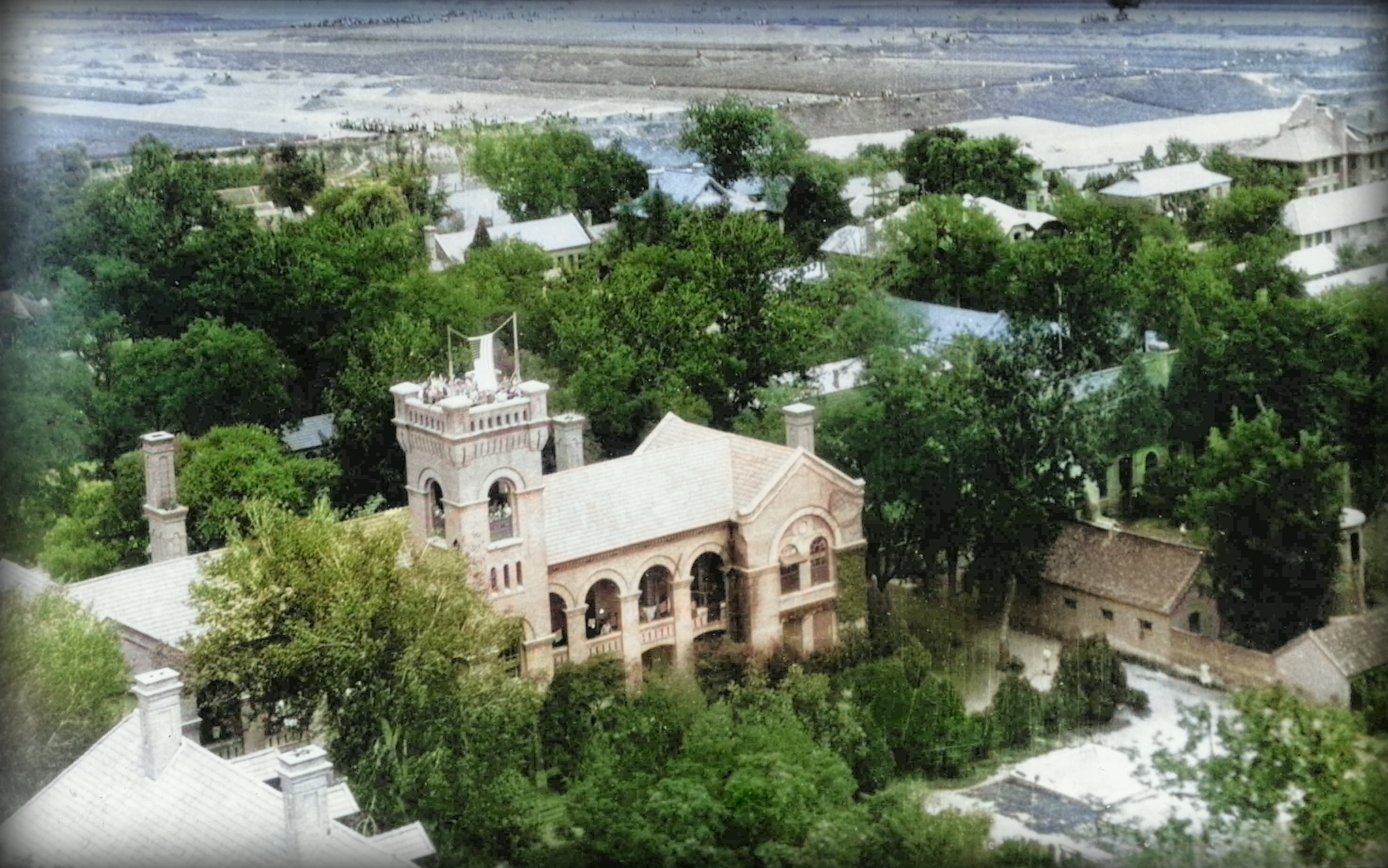


Once again the Japanese were to place us, and all the others
brought to this camp, into empty buildings. As mentioned earlier,
they had taken over the American Presbyterian Mission Compound at
Weihsien, Shantung Province. Evidently preparations for the
two-thousand people destined for this camp had consisted of getting
rid of all furniture and furnishings in the buildings at the time
of take-over. The first arrivals found the yards full of classroom
benches and desks, tables, lab equipment--including bottles of
chemicals, test tubes, etc.--bath tubs and flush toilets
(especially in the vicinity of the hospital.) In the vicinity of
the two-story buildings it looked as though the furniture had been
pitched out of the second floor windows. Though our beds and
bedding had come on the train with us, these things were not
brought to camp until the next day.
That first night was something of a nightmare. Since there were
very few in camp when we arrived, there was not much for them to
share with the thirty-three new arrivals. But what they had they
shared with us. Later arrivals, especially from the north, had to
wait as long as two weeks for their things. These people really
suffered, especially families with small children.
That first night was something of a nightmare. Since there were
very few in camp when we arrived, there was not much for them to
share with the thirty-three new arrivals. But what they had they
shared with us. Later arrivals, especially from the north, had to
wait as long as two weeks for their things. These people really
suffered, especially families with small children.
One of the classroom buildings had been set apart for the use of
the sisters and a small group of unmarried women. The rest of the
unmarried women filled a second classroom building. The married
couples were housed in what had been student dormitories--long rows
of one story buildings divided into small rooms, each room leading
into the yard. A family of three rated one room; more than three,
two rooms. These rooms were not large enough for two single beds,
so the first few weeks there were many requests to swap single beds
~ for double beds. One could get a double bed in, but not much
more. In our building, each of the thirteen communities in camp was
given a room in accordance with the size of the community. Some
were more crowded than others. There were seven of us, for Sister
Felicia had been a bed patient in Kaifeng for almost a year and had
been removed, by the Japanese, to the Sisters of Charity Hospital
in Peiping before we left Kaifeng. We were given one of the smaller
rooms. The ten Sisters of Providence drew a larger room. I mention
this because it made a difference in the number of Masses said in
the rooms.
As indicated above, we were some of the first to reach this camp.
For another two weeks word spread fast among us whenever more
internees arrived. We would hurry toward the front gate and line
the road along which the new arrivals marched into camp.
Especially to be remembered was the evening that one-hundred-fifty
priests (Belgians, known as the Scheut Missionaries), the complete
personnel of three northern vicariates, swung down the roadway and
into the play-ground for their checking. Closely following them
were thirty-two sisters, Missionary Sisters of St. Augustine, also
Belgian. A few days later about fifty Dutch Franciscan Fathers and
twenty-four Dutch Franciscan Sisters arrived. These Sisters were
soon affectionately known to all internees as "The Little Dutch
Cleansers." With their veils pinned back and their habits pinned
up, they were ready for any work, even the hardest and dirtiest.
The final count of internees was near two thousand, of which four
hundred ten were priests and brothers and one hundred sixty were
sisters.